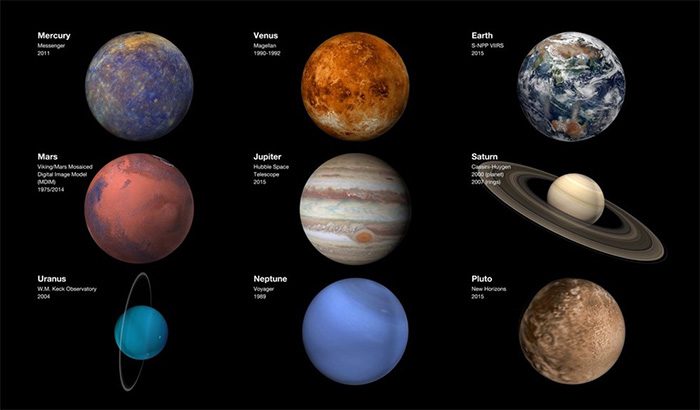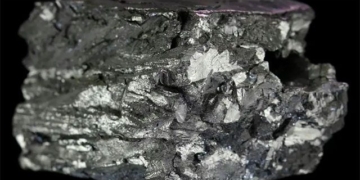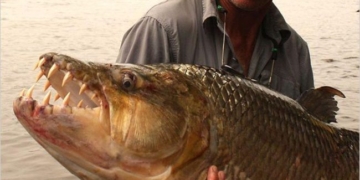Humans need oxygen to breathe. Without sufficient oxygen anywhere in the Solar System, death comes swiftly. The only difference between planets is whether their temperature or pressure will kill us quickly.
Dr. Jennifer Glass, an associate professor at the School of Earth and Atmospheric Sciences and Biological Sciences at the Georgia Institute of Technology, told Newsweek: The Earth’s atmosphere today contains 20% oxygen. Without oxygen, humans will die from asphyxiation in about 7 minutes.
This is what would happen to humans on each planet, starting from the one closest to the Sun.

Each planet poses different lethal challenges – (Photo: NASA).
Mercury
Being the closest planet to the Sun indicates that Mercury is not a hospitable planet.
On the side of Mercury facing the Sun, temperatures rise to 426°C. Meanwhile, at night, temperatures plummet to -142°C.
Therefore, death for humans on the cold side would be similar to death in outer space and could occur within minutes. “If you are on the hot side, you would be incinerated in seconds, and all the water would evaporate from your body,” Dr. Glass said.
Venus
The thick atmosphere of Venus creates a greenhouse effect, raising its surface temperature to about 464°C. According to NASA, the dense atmosphere also means that surface pressure would be fatal. Unfortunately, it also contains clouds of sulfuric acid.
“While struggling to breathe, humans would be burned by the extreme heat and acid within seconds. At least it would be a quick death, but also a horrific one,” Dr. Glass noted.
Mars
Mars offers the most survivable conditions compared to anywhere else in the Solar System, except Earth.
This planet can reach temperatures of up to 21°C, pleasant during summer, although they drop to -107°C at the poles.
However, even if a person is placed on the equator in summer, they would not survive long. The atmosphere of Mars is nearly pure carbon dioxide (CO2). This makes it one of the worst planets to die on.
“If carbon dioxide accumulates in a person’s blood due to asphyxiation, they will experience intense breathlessness before losing consciousness and then dying from suffocation. If their blood is diluted by breathing a gas without carbon dioxide, such as hydrogen, helium, nitrogen, methane… the person will lose consciousness within seconds, not feeling breathless. Thus, the death would be less painful, but they would still die within a few minutes due to lack of oxygen,” Dr. Glass explained.
Jupiter, Saturn, Uranus, and Neptune
The gas giants in the Solar System are grouped together because the process of dying is essentially the same, but it can vary depending on where you are on the planet since they lack a solid surface.
Being situated in the center of a massive gas cloud means that instant death could occur, even before one has a chance to feel anything.
For example, the core of Saturn is about 9,444°C, and the pressure at the core of Jupiter is so high it would feel like having 160,000 cars stacked on top of your body.
Temperatures range from -74°C on Jupiter to -165°C on Neptune.
“There is no solid ground on the gas giants, so you would simply fall through them until crushed by their immense pressure. Their atmospheres consist of hydrogen with some helium, methane, and water, carbon dioxide, so at least when you freeze and get crushed to death, you would faint gently, not panicking from the increased CO2 levels as on Venus and Mars,” Dr. Glass emphasized.


















































